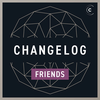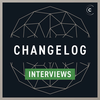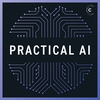Zac Smith, managing director Equinix Metal, is sharing how Equinix Metal runs the best hardware and networking in the industry, why pairing magical software with the right hardware is the future, and what Open19 means for sustainability in the data centre. Think modular components that slot in (including CPUs), liquid cooling that converts heat into energy, and a few other solutions that minimise the impact on the environment.
But first, Zac tells us about the transition from Packet to Equinix Metal, his reasons for doing what he does, as well as the things that he is really passionate about, such as the most efficient data centres in the world and building for the love of it.
This is a great follow-up to episode 18 because it goes deeper into the reasons that make Gerhard excited about the work that Equinix Metal is doing. This conversation with Zac puts it all into perspective.
By the way, did you know that Equinix stands for Equality in the Internet Exchange?





